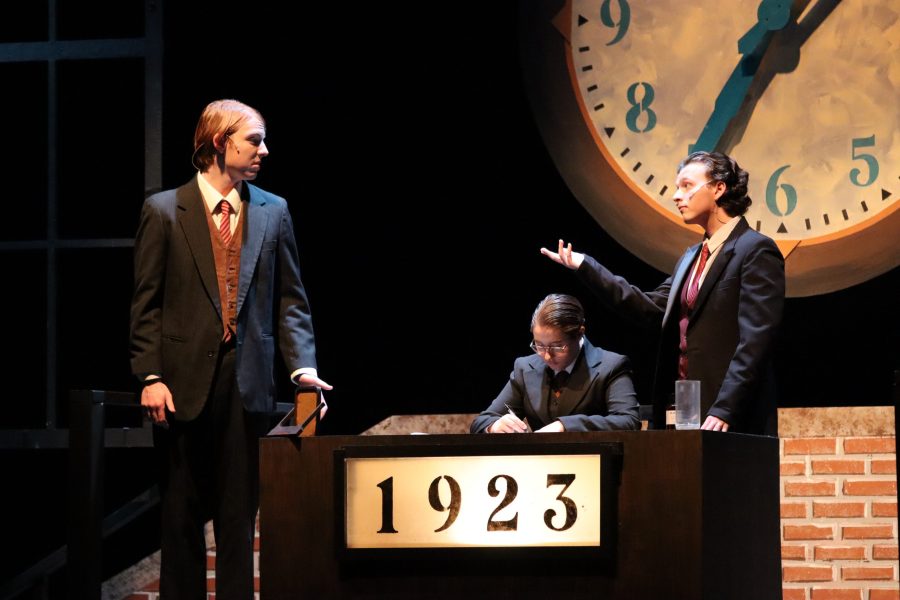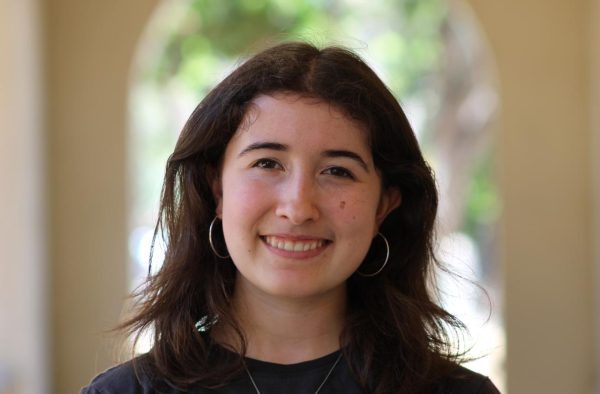Paly Theater premiered its first production of the year, “Radium Girls,” from Nov. 4-13.
The play follows the story of women who work in a watchmaking factory in the 1920s, painting the hands of watch faces. The women use radium in the paints to make the numbers on the watches glow in the dark; however, it is later found that radium is radioactive and dangerous.
Co-director and theater teacher Sara Thermond said “Radium Girls” demonstrates how sexism, power dynamics between employers and employees and manipulation of the press silenced the problem of radium poisoning.
“It is very much rooted in a historical event, but I think it has a lot of themes that are important for society to consider, even in the present day at this time,” Thermond said.
After two consecutive years of fantastical and light-hearted shows, Thermond said she decided to start off the season with a historical play to give students more variety.
“I wanted to do something that would give the (student actors and designers) the experience of incorporating more research and history into their work in preparation,” Thermond said.
Senior Mina Fry, who plays the lead role of a factory worker who raises awareness about the radium poisoning, said due to the historical nature of this play, she had to pay particular attention to how she represented her character.
“When you are trying to portray all the real life trauma (a character that was a real person) went through, you have to be a lot more sensitive than if you’re just playing a fantasy character,” Fry said.
Student assistant director Sophia Varga said that special attention was given to ensure that the play did not trivialize the effects of radium.
When thinking about how we were going to do certain scenes, we had to think about how to portray the illness (of the radium girls) respectfully,” Vargha said. “We wanted to do it in a way that did not romanticize it but still got across the horrors of (their illness).”
Head costume designer Noah Boyarsky said the costume department spent a lot of time preparing accurate costumes that matched the style of the 1920s.
“We definitely put more time into research for this play, which is hard because the further back you go in history, the less documentation there is,” Boyarsky said. “It ended up being really rewarding when we managed to make costumes that actually fit into the right cultural era.”
In preparation for the play, the crew members spent their time gathering information. Boyarsky said it is important to ensure that both the production crew and the students with acting roles are well-versed in the specific details of the time period, which applied to their respective specializations of the set.
“One of the great parts about working on a historical show is that everyone is collaborating to do historical research,” Boyarsky said. “The hair and makeup (department) is doing their research, and the director knows a lot about the era.”
Boyarsky said his favorite aspect of creating a play is seeing the final product come together.
“What I like about theater is that everyone’s work comes together between departments, like the acting, directing, lighting, hair and makeup,” Boyarsky said.
Vargha said the departments collaborated to make artistic changes that differed from the radium girls book, such as the inclusion of a scene where a character is smoking to remark on the same lack of knowledge on the harmful effects on consumer goods.
“You can’t change the actual dialogue, but through the performances, you can add certain depth,” Vargha said.
Although the performances are over, Thermond said she hopes the themes and messages from the play will continue to be shared.
“My big goal is to express something that is based on real people to move the audience to emotions over the experiences of all of these characters,” Thermond said.
Vargha said she hopes the audience takes inspiration from the factory women who stood up for their rights.
Vargha said,“If you are facing an injustice, you should try to advocate for yourself and fight for what is right.”




